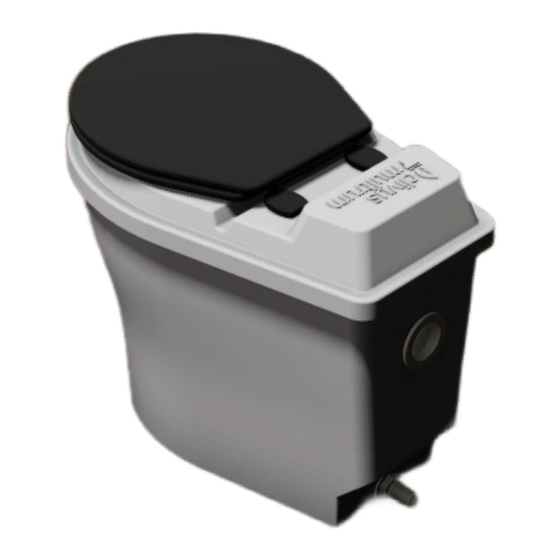clivus multrum CM2 Manuale d'uso - Pagina 11
Sfoglia online o scarica il pdf Manuale d'uso per Servizi igienici clivus multrum CM2. clivus multrum CM2 13.

5.0 HOW COMPOSTING WORKS
5.1
General
Composting involves the biological decomposition of organic matter using natural occurring organisms such as
bacteria, fungi and other small organisms into compost which is a humus-like product.
The composting process can be aerobic or anaerobic however aerobic decomposition is desirable because it is
efficient and does not produce unpleasant odours. Composting in a Clivus is effectively aerobic however there may be
anaerobic decomposition within small pockets within the compost pile.
The composting process involves four main components: microbes ( including bacteria, fungi and protozoa), organic
matter, water and oxygen.
The carbon compounds present in the organic materials are used by the microorganisms as an energy source and
transformed into carbon dioxide using the oxygen present. As the carbon dioxide and water vapor is released into the
environment the pile becomes smaller.
Nitrogen is also a crucial element in the composting process which is required by the microbes for cell growth. For
optimal decomposition the ratio of carbon to Nitrogen should be around 30:1. Urine and human feces are relatively
high in Nitrogen and therefore additional carbon is required for optimal composting.
5.2
Moisture
In optimum conditions, the compost material has consistency of potting mix about 35% to 65% moisture.
When below 35%, there is not sufficient moisture for the microorganisms to function and above 70% saturated
conditions begin to develop and oxygen depletion becomes a limiting factor. Under these condition the process
becomes anaerobic and the process releases odorous gases such as methane and hydrogen sulphide.
5.3
Temperature
The optimum temperature range for most compost toilets is 18°C to 45°C.
Lower temperatures result in a mouldering process that takes a significantly longer period of time to compost.
Additional chambers may be required in this instance.
5.4
Aeration
The aerobic organisms responsible for the composting process require air to survive.
Without air, they will die and be replaced by anaerobic micro organisms that will slow the composting process and
generate odour.
For compost toilets to work most effectively, the material being composted should be unsaturated with liquids, and
have a loose texture to allow air to circulate freely within the pile.
5.5
Pathogens
Pathogens are eliminated through the long retention times in the compost, the compost temperature and the activity
of the micro-organisms.
OM-CM2.201104
Updated: 04/11/2018
Copyright © Ecoflo Wastewater Management
Page 11 of 13
